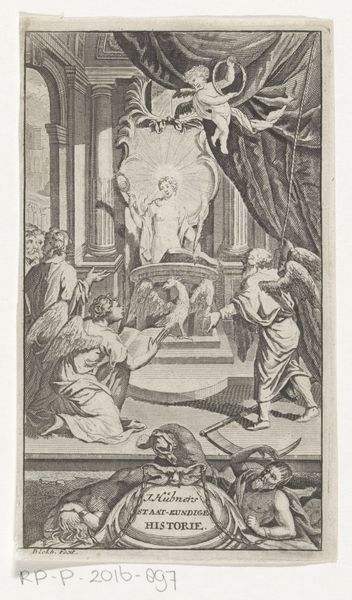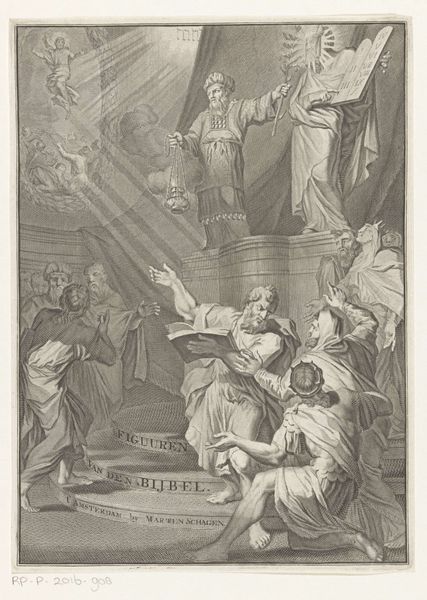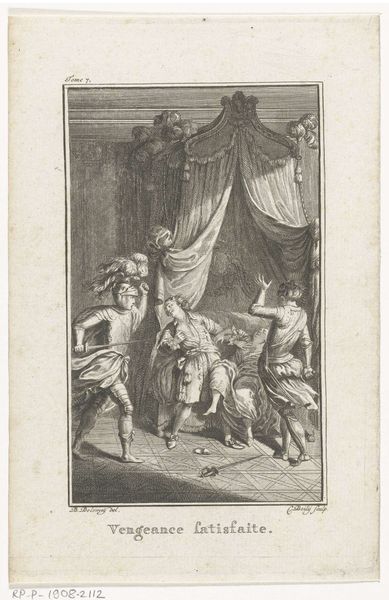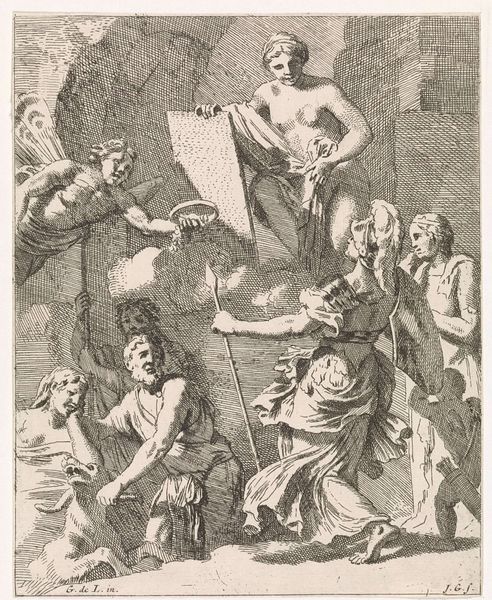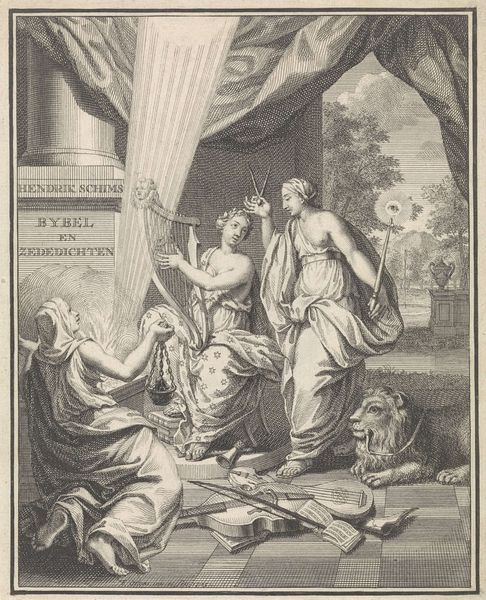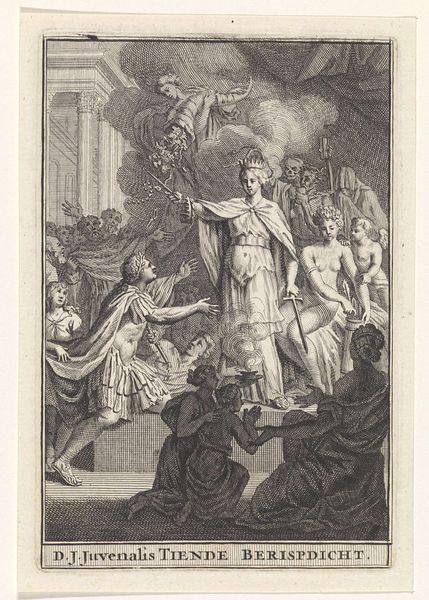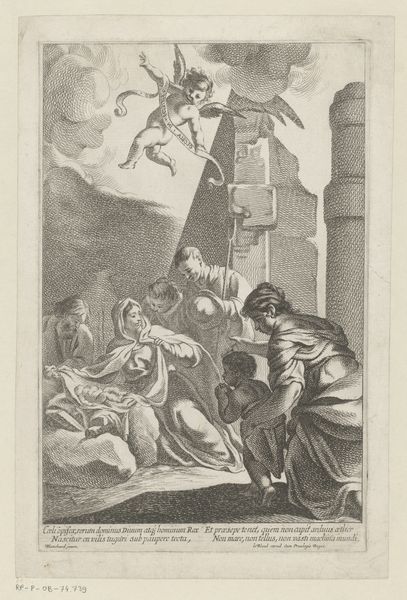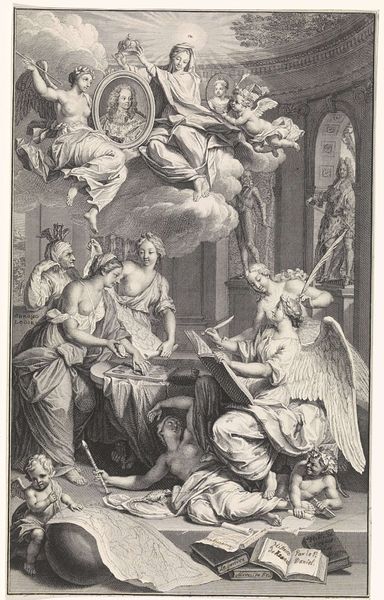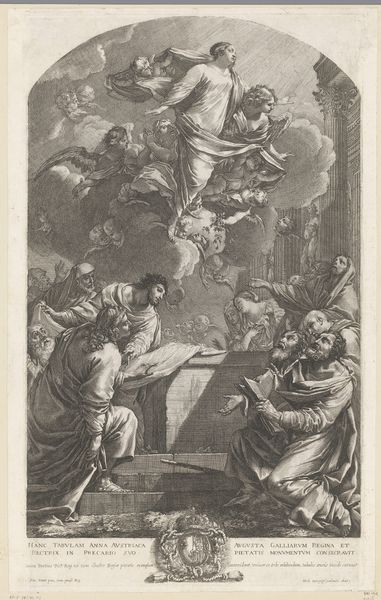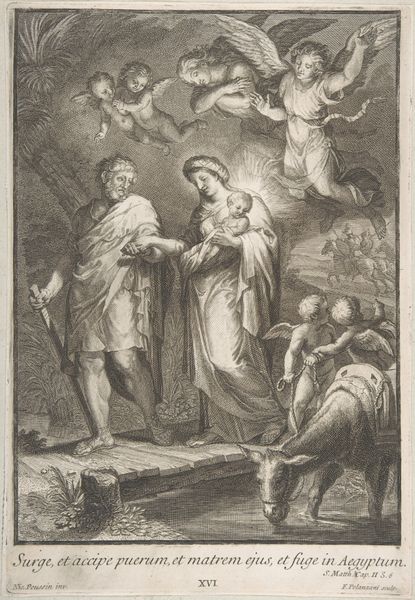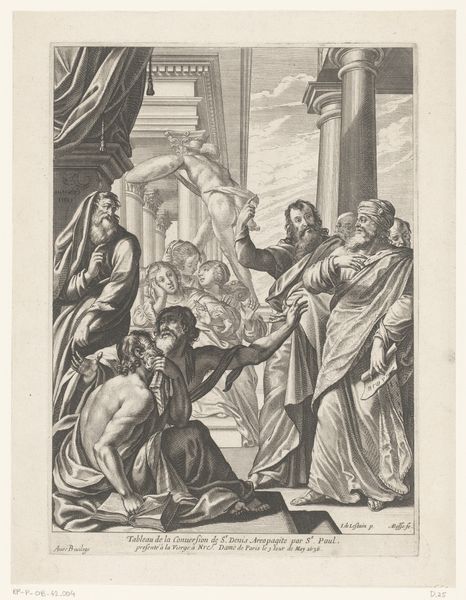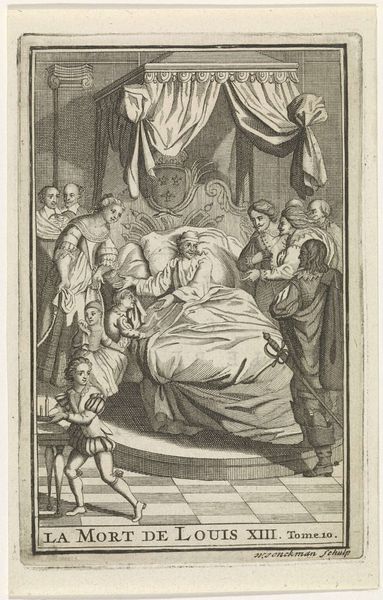
Dimensions: height 180 mm, width 110 mm
Copyright: Rijks Museum: Open Domain
Editor: This engraving is entitled "Mort tragique d'Agrippine", which I believe translates to "The Tragic Death of Agrippina". It's by Charles Boily and dates from around 1753 to 1813. The scene depicts a dramatic moment, presumably Agrippina about to be murdered. I'm struck by how staged and theatrical the composition feels. What do you see in this piece? Curator: That sense of theatricality is crucial. Consider how history paintings – especially those depicting moments of intense drama and moral conflict – functioned in the late 18th and early 19th centuries. This image wouldn't have just been about illustrating a historical event, it was about shaping public perception, and instructing the viewer about civic virtues, political dangers, and the consequences of certain actions. What specific details reinforce this sense of a morally instructive narrative? Editor: I suppose the figures themselves seem very posed, like actors on a stage, and the stark contrast makes it so melodramatic. But does it celebrate Agrippina or warn against something about her? Curator: That’s a really sharp question. Boily likely assumes familiarity with Agrippina as a morally ambiguous figure—mother of Nero, ruthless power player, and ultimately a victim of her own machinations. So, by showcasing her violent demise, this engraving comments on the dangers of unchecked ambition and the instability of power. What do you think this work might be saying about the artist’s social context? Editor: Thinking about that instability, I guess revolutionary France was dealing with that quite a lot! Maybe showing the death of someone in power served as some sort of caution... This artwork suddenly feels very relevant to the political climate it was made in! Curator: Precisely! And the relatively wide availability of engravings made such potent messaging all the more influential, especially when exhibited in public spaces or discussed in popular publications. It’s fascinating to consider how even an image seemingly rooted in the distant past could actively engage with and comment on contemporary concerns. Editor: Absolutely! I hadn't considered the public role of art and the social context so deeply. I will definitely approach art with these points in mind moving forward.
Comments
No comments
Be the first to comment and join the conversation on the ultimate creative platform.
